One of the three famous contemporary landscape architects in Japan - Toda Fangshu
One of the three famous contemporary landscape architects in Japan
- Toda Fangshu
Abstract: family tree Tian Fang is known as one of Japan's three most famous contemporary landscape designer , integration into the soft and warm implication in a concise, powerful space; ecological design, in pursuit of the perfect embodiment of the quality of the details. In his works, he can feel the infinite "life force". I think that the source of the idea of Toda Yoshiki is Zen and national consciousness.
Key words : natural ecology Zen national consciousness flowing dry landscape mood
(1) Introduction to Toda Fangshu
The first contact with Takino Junming's design work was a very occasional opportunity to flip up a magazine and saw a scattered stone, large stones and a few landscape stones that felt free to pile up. There was a short green and green pine next to it. The whole picture was white and green. It immediately attracted my attention. I think his stone paving and the "translucent leaking" landscape stone without our Chinese landscape stone. Together with the entire courtyard, this design really surprised me. It is not like Chinese plants to express the space of the courtyard and the landscaping of plants. It is entirely stone and wood, and water. These natural elements give this courtyard soul! So I remembered such a name - Takino Junming
Tian Fang family tree is known as one of Japan's three most famous contemporary landscape designer , born in 1947 in Onomichi City, Hiroshima Prefecture , in 1970, graduated from the Department of Park made Tokyo Agricultural University, Japan, urban design after the inauguration. In 1980, the Toda Fangshu Landscape Planning Institute was established. In 1989, he won the Tokyo Agricultural University Garden Award for his project with the Suwa Lakeside Park. In 1994, he won the Japan Park Greenland Association Award for his "Kogli Garden". The “Hongzhi Township” project of Xiushan Temple, which was created in 1995, won the Garden Association Award. In 2005, he became the landscape director of the Aichi Expo .
His design philosophy is "look", "experience", "description" ; the characteristics of the work: the soft and warm meaning in the concise and powerful space; the eco-design, the pursuit of the perfect embodiment of the quality. The work is filled with smooth curves, large areas of gentle slopes, smooth and simple spaces, scattered structures, winding streams and ink-like reflections in the water. These works pay more attention to the "natural description" while expressing "natural reproduction" and "natural experience".
(2) Appreciation of the works of Toda Yoshiki, that is, the expression of the works
And my reasons for appreciation
I. Appreciation of the Green Jinnan Central Garden
Mr. Toda’s earlier representative work was Green Jinnan Central Garden (1982). In the design project, there is a stream called “Seven of the Kettle” near the planning area. This work uses this allusion as the design theme to make the seven unique streams into a complete continuous landscape .
The downstream pool is made up of a simple circular lake. The lake reflects the rich and varied natural scenery around the lake, creating a richer landscape. In the meantime, the gentle stream on the slopes, the simple configuration of the lake, the main scene is the sky and the reflection of the natural scenery of the sleep, try to avoid the cumbersome shape.
The central garden is connected to its hotel, and the purpose is to create a pleasant and relaxing green space in a large-scale facility.
In the works, the theme of “flowing water” is to set up streams and pools around the main line of water, making two different waterscapes: “moving” and “quiet”. Among them, the reflection of “quiet” water has become the most characteristic landscape in the works.
Figure 1 Round pool |
Figure 2 蜿蜒 Stream |
Figure 3: Static reflection in the water |
Figure 4 Winter landscape in the garden |
| |
Second, the appreciation of the sports park "boating club"
The Sports Park is located in front of the name of Xingui Island, Nomura, Quanji District, Sendai City, Miyagi Prefecture, with an area of 75,300 m2. The characteristics of this work are that the coordination relationship between the indoor sports hall and the surrounding environment is well handled. Designers first use terrain to reduce the spatial scale of large structures. In order to create a landscape surface that utilizes the surface and the observed side, a scatter-style rest pavilion is set up to become a complete and unified returning space. In addition, in order to coordinate the relationship between the building and the natural topography, some small artificial structures were set up, which made the natural undulating gentle slope lawn have a middle transition, which achieved a continuous and very harmonious and harmonious effect as a whole. A beautiful picture of nature.
In order to create a life-oriented space that is dominated by sports, the entire site is constructed with a warmer shade of light, which contrasts strongly with the greenness of the large forest, bringing people's attention into the space. And this space has a rich color expression all year round.
Figure 2-1 Power pole, green shade, red wall contrast strong and harmonious |
Figure 2-2 Strong contrast |
Figure 2-3 |
Figure 2-4 |
3. Appreciation of SUWA Waterfront Park designed by Mr. Toda
|
|
SUWA's waterfront park designed by Mr. Toda, this sculpture is exactly a park donated by Seiko, a famous Japanese watch company. Seiko is a very famous company that makes watches. Therefore, designers use a lot in this design. Metaphorical approach: The height of this sculpture is 12 meters, representing the concept of 12 o'clock in time. If you look at the plane of this sculpture design, you will find more meaning in it. The trees usually have annual rings, and the company was just 25 years old, so the ring pavement next to the sculpture (between the two pillars) is exactly 25 laps, which represents the age of the company.
The sharp shape allows us to understand the perseverance of the human nature.
Fourth, Appreciation of the Atrium of the Aya-cho Hall
Among his works, what impressed me the most was the design of the inner court of the Sakamachicho. This project in 1998 to build on, but the total land 500 square meters, this is named himself named "mountains of the court," the 3 small space, a symbol surrounded by green mountains of the "silence" in this In a quiet space, the four- story garden that emphasizes the sound of falling water makes every person who appreciates it think of flowing, gentle water, and thus experience the silence that can't be experienced in the urban messy environment. Here, Mr. Kanno combines the tranquility, freshness and sweetness of the flowing water. The water and plants blend harmoniously, so that you can immerse yourself in the meditation of space. Layered branches and a set of stones further herald the infinite extension of the space. This blend of nature and manpower is the refinement and sublimation of nature, the form and image of nature, plausible, but it arouses people's association and thinking, expresses the Japanese people's deep understanding of the scene, plus the uniqueness of the Japanese. Cultural complex, the whole place conveys the unique spirit and temperament of Japan.
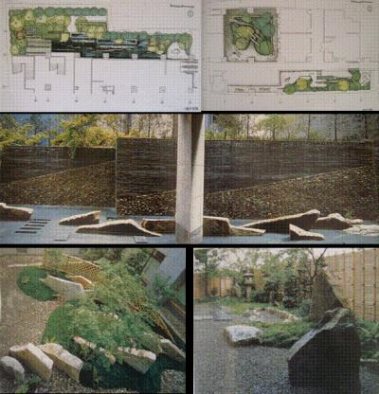
As he said, the green pavilion is the crystallization of his own soul, he said, “Whenever I find a suitable stone for a garden, I often go deep into nature. In the process of finding plants. I will draw many sketches with emotions. When I started to set up the stone and plant the plants, I was completely immersed in the dialogue of various related elements. I sought a certain spirit of a stone or a tree to determine Its proper location". The technique used seems to be simple. In fact, every stone is placed in the position of each stone, and each stone is made into a small life. Garden respectively 1 layer and 4 layers . 3 very limited space, and all on the artificial base. In this limited and specific place.
(3) Source of thought
As a Zen Master and a landscape (landscape) designer, he once said: "As a Zen Buddhism, I have been following the spirit of Zen for many years, and 'courting' is a 'self' for me. A highly spiritual design process that is performed in different spaces. It is not only the pursuit of styling beauty, but also the Zen monks called 'Shi Lijun' are places where the garden is the 'performance of their own', and I regard the court process as part of the daily practice. I am the same myself. I regard the creation process of the work as a practice. Up to now, I have accumulated it little by little. 'Ting' has occupied a very important position in my heart. He regards the garden place as the habitat of "spiritual expression", so he can feel the infinite "life force" in his works. I think that the source of the idea of Toda Yoshiki is Zen and national consciousness.
We can experience this strong spirit and harmony in the design of the work environment. When people see the garden, they can not only feel the vastness of nature, but also engage in dialogue with nature. Such a garden space should be a new era Japanese garden based on the spirit of Japanese traditional beauty and Zen, and the modern era of the Heisei era. At the same time, he is serious about the scrutiny of every detail, and the fineness and meticulousness shared by this Japanese designer. I often hear people sigh how fine the Japanese garden construction is, which is inseparable from the meticulous scientific attitude of the Japanese. This also makes me sincerely admire!
(four) summary
The gardening ideology of Japanese gardens is influenced by the extremely strong Zen ideology , pursuing a realm that is far from the world and extraordinary. Performance in the garden of the United States depends mainly on the proportion of overall coordination, integrity and temperament as well as penetrate the spirit of the period, rather than decorative. Especially in the late dry landscape , simple , pure, in a rather limited space , band gives a sense of ethereal silence.
Japanese modern garden designers grasp the essence of traditional Japanese gardens , and eliminate the deliberate processing in the design , but they can create an aftertaste and a sense of intoxication. Emphasis is on nature , but it is not simply blunt to imitate nature .
In modern design , the Japanese culture is subtle in its subtleties , and its form is not limited to traditional gardens . The work of Toda Yoshiki not only has the characteristics of modern gardens , it is clear and innovative , and it satisfies the needs of existing life , and in a deeper sense, it contains the artistic conception of Japanese traditional gardens. Japanese garden landscape is a comprehensive design , which not only meets the needs of people , but also meets people's appreciation needs , including vision and psychology. This involves the content of superstructures such as national character and aesthetics , which are most abundant in traditional gardens. The design approach can provide a reference for the Chinese garden design community. It can be said that modern garden design methods and concepts adapt to modern lifestyles , and the characteristics and culture of traditional gardens are unique "roots". To study traditional gardens, we must not only study the specific traditional gardening elements and techniques , but also explore the inner aesthetic taste and cultural meaning , and embody its application in modern garden design , using the modern gardening techniques and materials to express the East. Culture , especially the mysterious qualities of Chinese culture.
references:
1. (中) Liu Tingfeng. The Significance and Expression of Japanese Garden [J] Garden, 2000
2. (中) Liu Tingfeng. Japanese Small Courtyard [M] Tianjin: Tianjin University Press, 2001
3. (Chinese) Zhang Junhua. Department of Gardening. Japanese landscape designer Toda Fangshu [M ] Beijing: China Building Industry Press, 2002
4. (Zhong) Zhang Zugang. Introduction to World Landscape Development [M ] Beijing: China Building Industry Press
5. (中) Yao Xueyan . From borrowing heterogeneity to transcending self : reading the comparison and development of Japanese gardens and Chinese gardens [ J ] . Garden , 2000


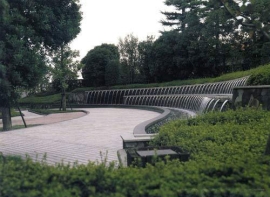
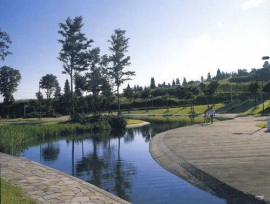
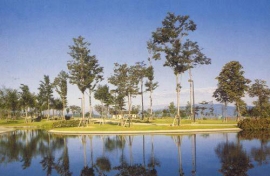
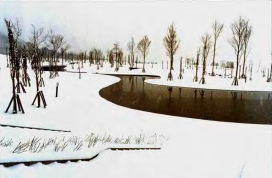
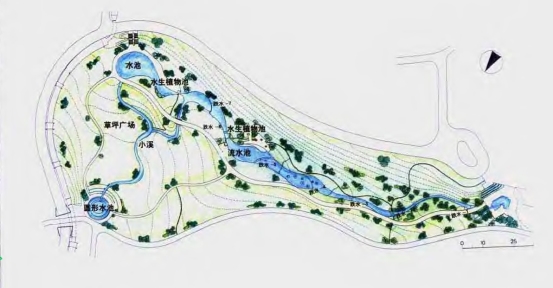
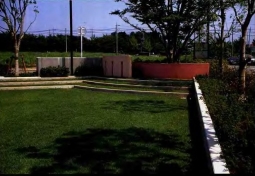
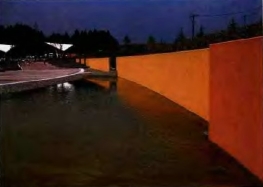
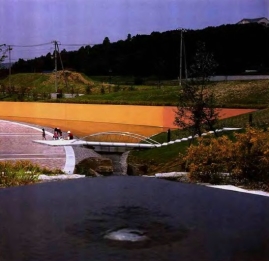
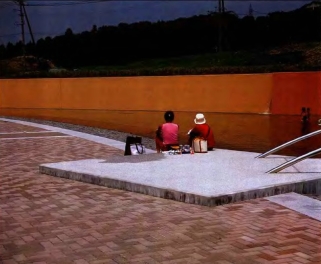
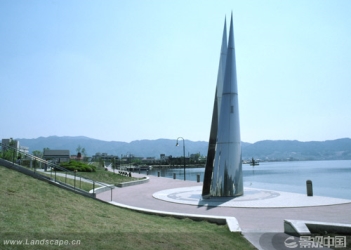

评论专区